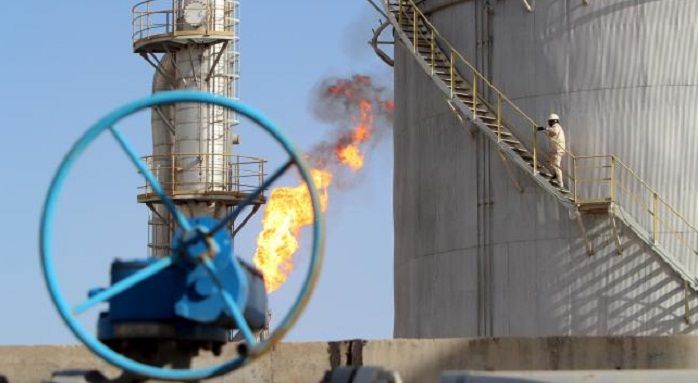Oil dips but set for biggest yearly gain since 2009

But the total count of 525 for the week, the last for the year, was still below last year`s level by 11 rigs.
U.S. benchmark West Texas Intermediate (WTI) CLc1 crude futures were down 18 cents. Or 0.3 percent, at $53.59 a barrel by 1:09 p.m. EST (1809 GMT), while Brent LCOc1 fell 24 cents, or 0.4 percent, to $56.61.
Brent has risen about 50 percent this year and WTI has climbed around 43 percent, the largest annual gains since 2009, when Brent and WTI rose 78 percent and 71 percent respectively.
Oil prices have slumped since the summer of 2014 from above $100 a barrel. The price rout, due to oversupply thanks in part thanks to the U.S. shale oil revolution, was accentuated later that year when Saudi Arabia rejected any deal by the Organization of the Petroleum Exporting Countries (OPEC), to cut output and instead fought for market share.
But a historic OPEC agreement struck over three months from September that will reduce production from Jan. 1, marked a return to the 13-country group`s old objective of defending prices.
Oman told some customers it will reduce term allocations by 5 percent in March, but did not say whether the supply reduction would continue after that.
Although doubts remain as to the production cuts` effectiveness in implementation, the rise in prices can be seen as "proof of international credibility," for OPEC and partners, said Igor Yusufov, founder of the Fund Energy investment firm and a former Russian energy minister.
Equally as important to oil prices next year will be the development of demand globally, and major forecasters diverge in their predictions.
"We see a big variation in demand growth assessments for 2017, ranging from +1.22 million bpd (barrels per day) ... to +1.57 million bpd," analysts at JBC said in a note to clients.
Oil will gradually rise toward $60 per barrel by the end of 2017, a Reuters poll showed on Thursday, with further upside capped by a strong dollar, a likely recovery in U.S. oil output, and possible non-compliance with agreed cuts.




























-1741856732.jpg&h=120&w=187&zc=1&q=70')



-1741945056.jpg&h=120&w=187&zc=1&q=70')














